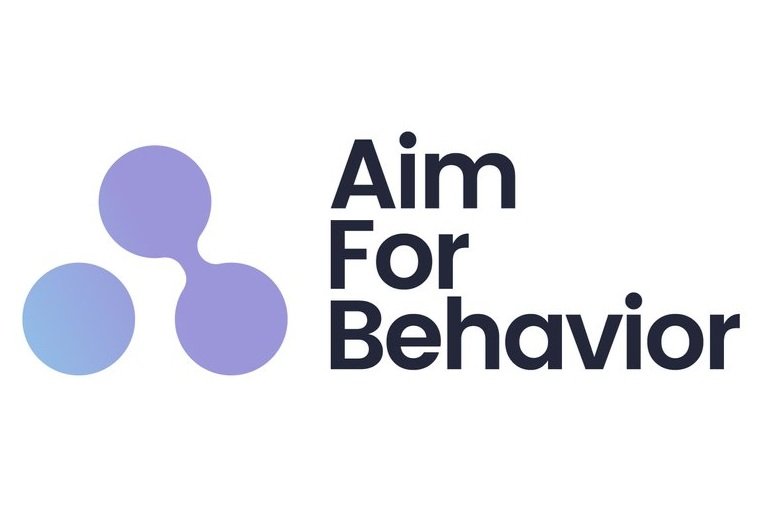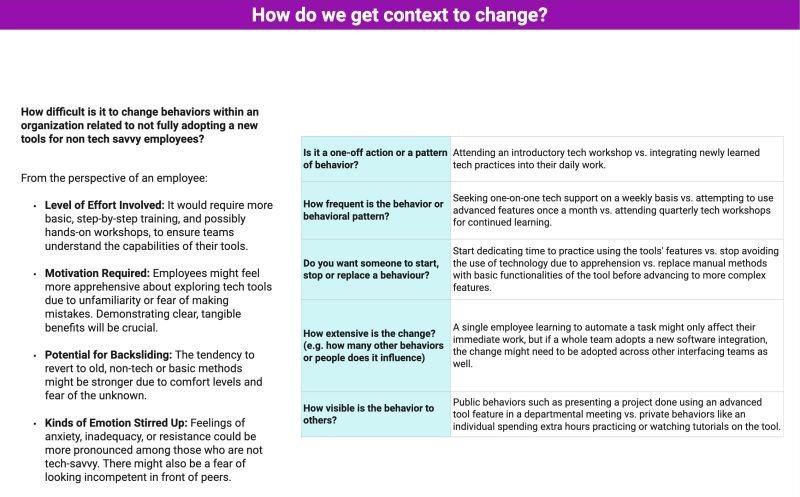How can Behavioral Science help to change organizational behaviors?
This is an example that is related to an organization where the employees are not fully adopting new tools. (This could also easily be translated to customers who don't adopt your software.)
As a side note, I know most organizations that are dealing with change and transformation want to move fast and need to move fast - but having time to reflect and not just act will save you both time and money in the long run.
From the perspective of the less tech-savvy employee you need to reflect on:
>Level of Effort Involved: It would require more basic, step-by-step training, and possibly hands-on workshops, to ensure teams understand the capabilities of their tools.
>Motivation Required: Employees might feel more apprehensive about exploring tech tools due to unfamiliarity or fear of making mistakes. Demonstrating clear, tangible benefits will be crucial.
>Potential for Backsliding: The tendency to revert to old, non-tech or basic methods might be stronger due to comfort levels and fear of the unknown.
>Kinds of Emotion Stirred Up: Feelings of anxiety, inadequacy, or resistance could be more pronounced among those who are not tech-savvy. There might also be a fear of looking incompetent in front of peers.
Once you have reflected on this, ask yourself:
1. Is it a one-off action or a pattern of behavior?
Attending an introductory tech workshop vs. integrating newly learned tech practices into their daily work.
2. How frequent is the behavior or behavioral pattern?
Seeking one-on-one tech support on a weekly basis vs. attempting to use advanced features once a month vs. attending quarterly tech workshops for continued learning.
3. Do you want someone to start, stop or replace a behavior?
Start dedicating time to practice using the tools' features vs. stop avoiding the use of technology due to apprehension vs. replacing manual methods with basic functionalities of the tool before advancing to more complex features.
4. How extensive is the change? (e.g. how many other behaviors or people does it influence)A single employee learning to automate a task might only affect their immediate work, but if a whole team adopts a new software integration, the change might need to be adopted across other interfacing teams as well.
5. How visible is the behavior to others?
Public behaviors such as presenting a project done using an advanced tool feature in a departmental meeting vs. private behaviors like an individual spending extra hours practicing or watching tutorials on the tool.The answers will help guide you into what kind of solution you might need to put in place.
Robert

